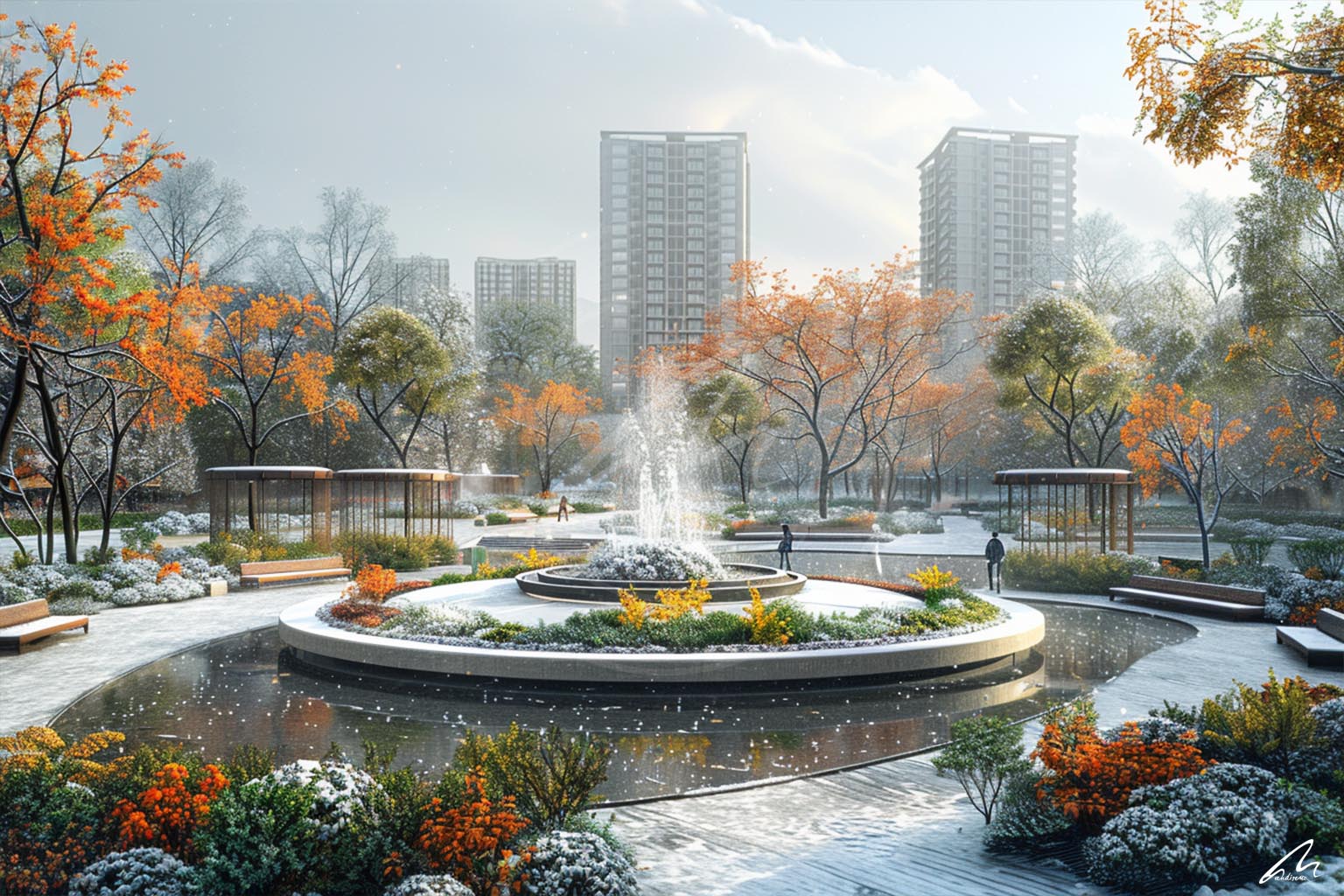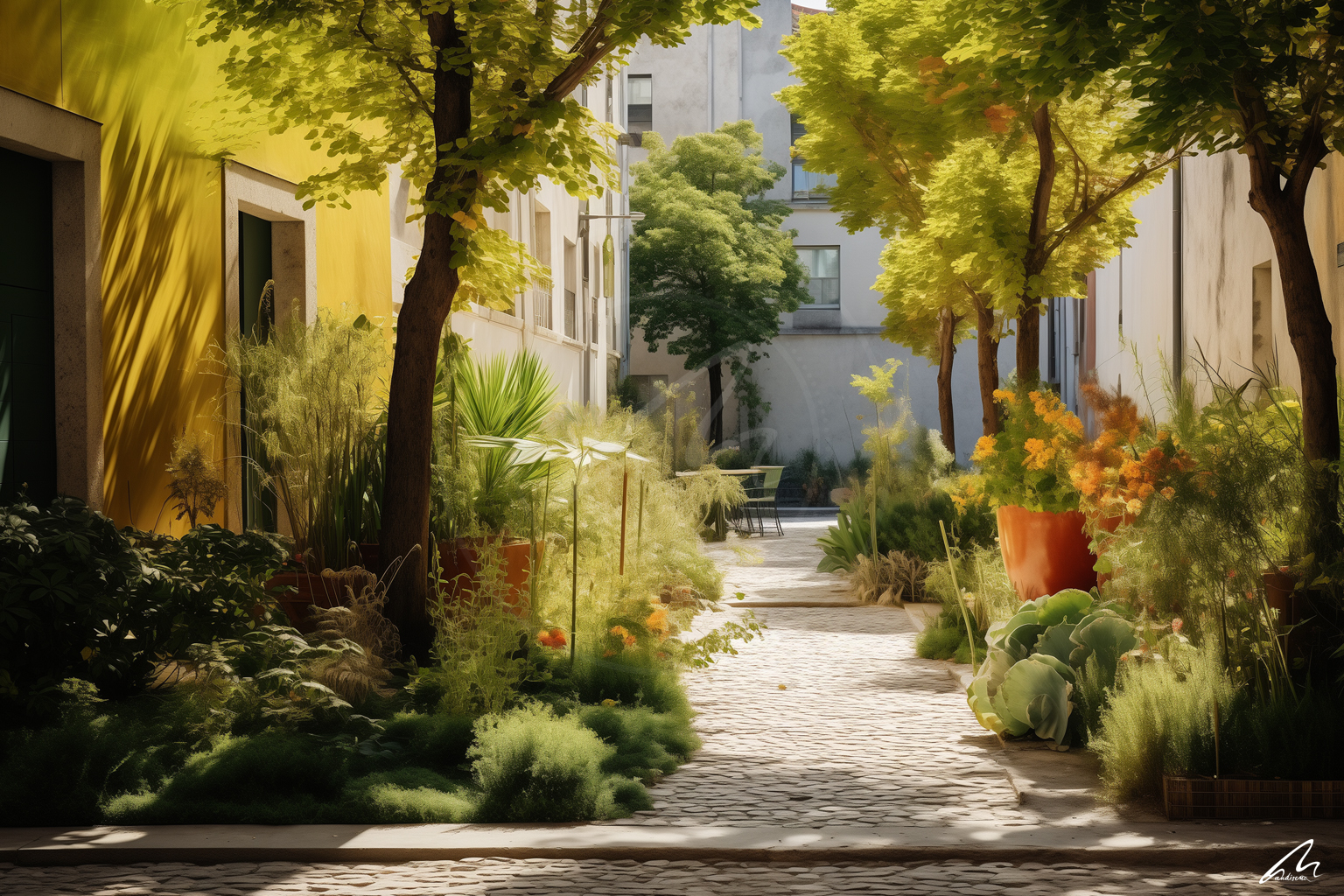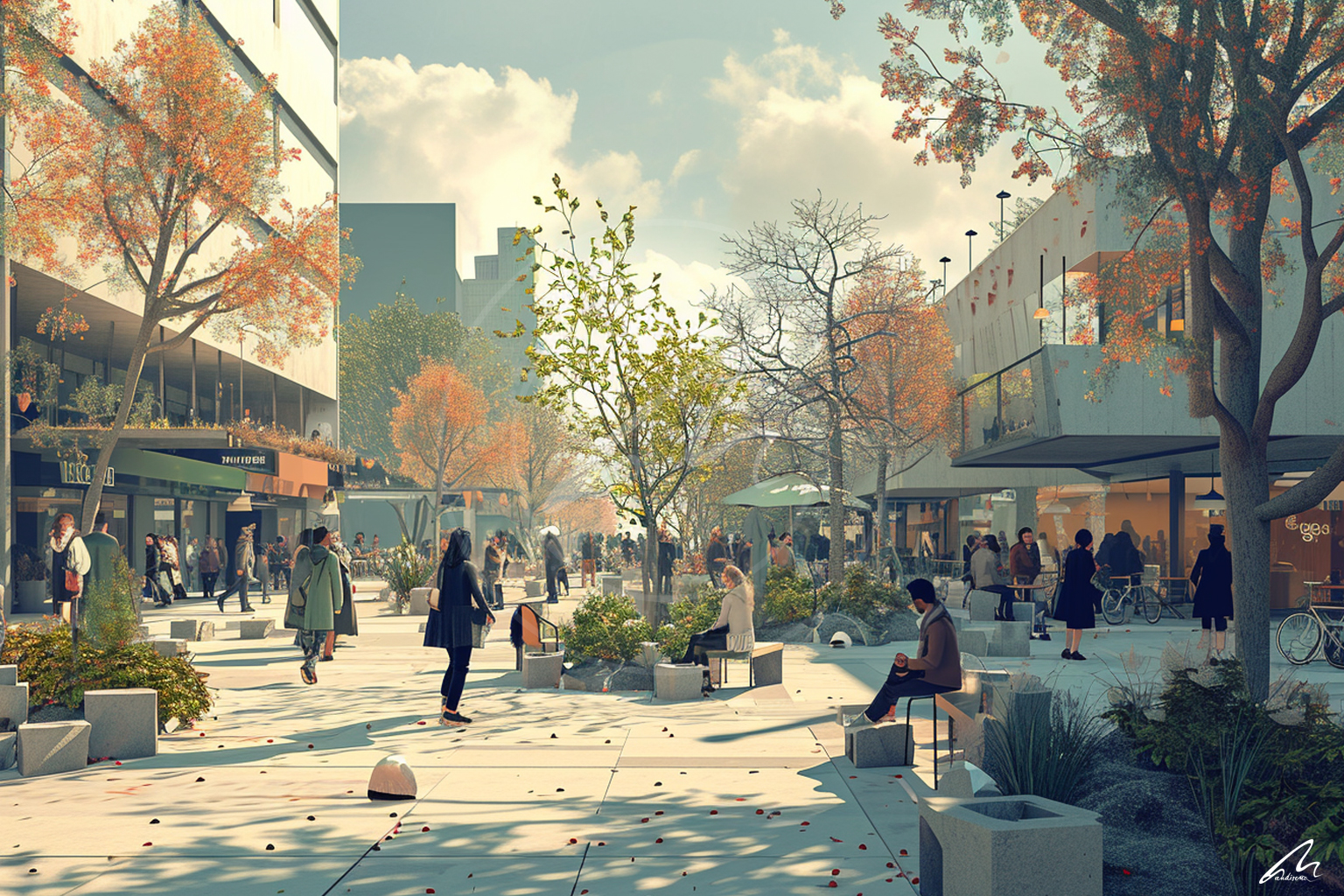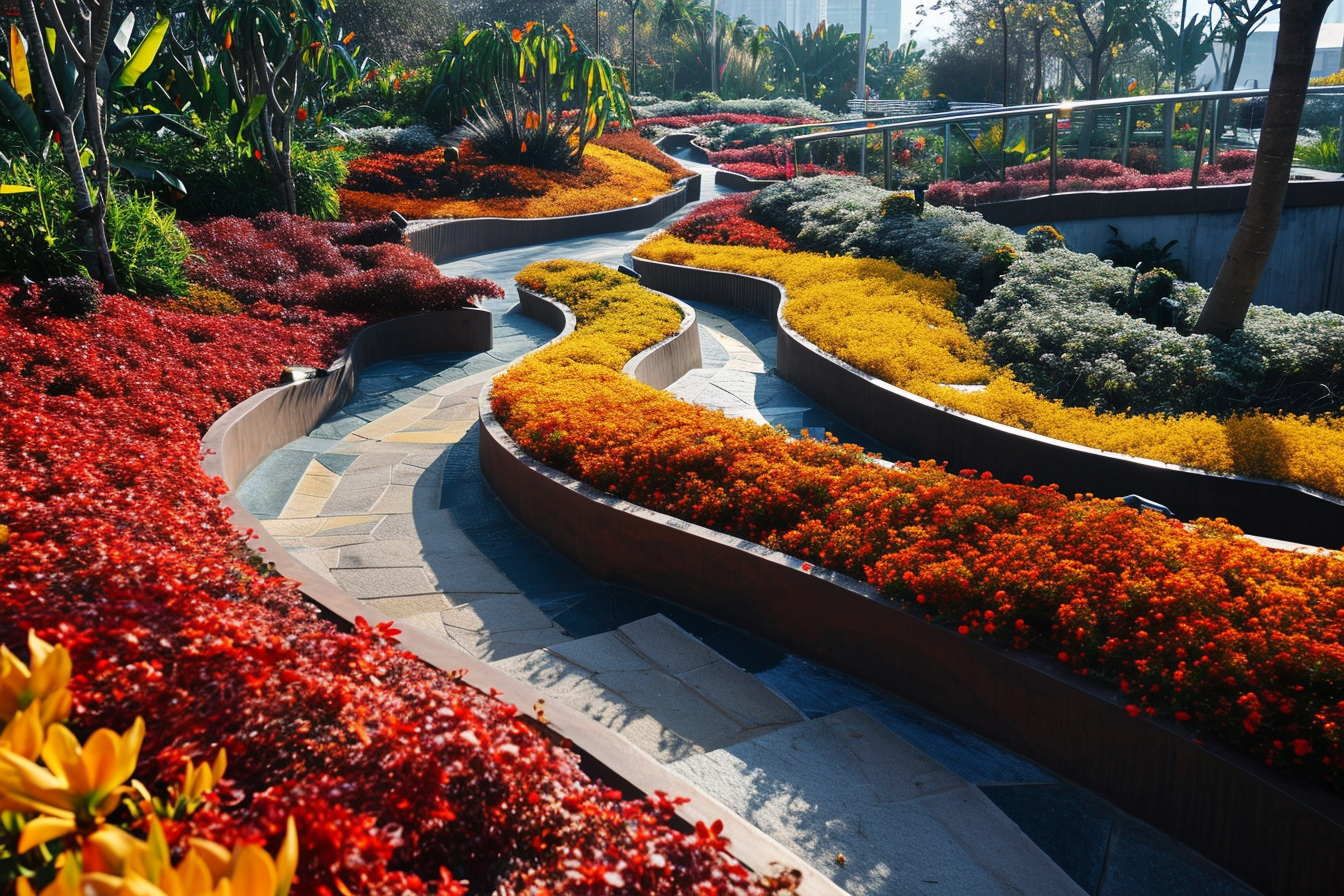Embracing Nature Indoors: Everything you need to know about Biophilic Design
Have you heard of the concept of Biophilic Design?
Biophilic design is a human-centered approach to architecture that aims to improve our connection to nature and natural processes in the buildings we live and work in. It has been found to support cognitive function, physical health, and psychological well-being.
Biophilic design can reduce stress, enhance creativity and clarity of thought, improve our well-being, and expedite healing. The sustainable aspect of biophilic design is also crucial for living buildings and environments.
What is Biophilic Design and why it is important?!
If you want to find out about this approach and are interested to know how we can bring nature into our life,
then Continue Reading!
Table of Contents
- Introduction to Biophilic Design: A design driven by nature
- Bringing the Outdoors In: Tips for incorporating natural elements
- Benefits of Biophilic Design: Enhancing mental and physical wellbeing
- Biophilic Design for Any Space: Residential and commercial applications
- Easy and affordable ways to incorporate biophilic design in your home
#1. Introduction to Biophilic Design: A design driven by nature

It’s a fascinating approach to architecture and interior design that seeks to incorporate natural elements and patterns into the built environment, in order to create spaces that promote health, well-being, and a sense of connection to nature.
Biophilic design is based on the idea that humans have an innate affinity for the natural world, and that incorporating elements like plants, natural light, and water can have a positive impact on our mood, productivity, and overall sense of well-being.
Whether you’re designing a home, an office, or a public space, biophilic design principles can help you create a space that is not only beautiful and functional but also promotes a healthier and happier lifestyle.
So why not give it a try and bring a little bit of nature into your next design project?
“We will never be truly healthy, satisfied, or fulfilled if we live apart and alienated from the environment from which we evolved.”
Stephen R. Kellert Quotes



#2. Bringing the Outdoors In: Tips for Incorporating Natural Elements
If you’re looking to create a more natural and inviting space in your home or office, incorporating natural elements can be a great way to achieve this. By bringing the outdoors in, you can create a calming and rejuvenating environment that promotes health and wellbeing. Here are a few tips to get you started:
First, consider adding plants to your space. Not only do they add color and texture, but they can also help purify the air and reduce stress levels. Choose plants that thrive indoors and don’t require too much maintenance, like spider plants, pothos, or succulents.
Second, think about incorporating natural materials like wood, stone, or woven fibers. These materials add warmth and texture to your space and can help create a sense of connection to nature.
Third, try to maximize natural light in your space. Open up curtains and blinds to let in as much natural light as possible, and consider adding mirrors or other reflective surfaces to help bounce light around the room.
Lastly, consider incorporating water features like fountains or indoor ponds. Not only do they add a calming visual element to your space, but the sound of flowing water can also be incredibly relaxing.
By incorporating these natural elements into your space, you can create a peaceful and inviting environment that promotes health and wellbeing. So why not give it a try and bring a little bit of the outdoors in?
#3. Benefits of Biophilic Design: Enhancing Mental and Physical Well-being
Biophilic design can reduce anxiety, improve cognitive performance, and promote better sleep. It can also reduce stress, enhance creativity and clarity of thought, and expedite healing. Biophilic design has been found to support cognitive function, physical health, and psychological well-being. Visual connection with nature can lower blood pressure and heart rate, improve mental engagement and attentiveness, and positively impact attitude and overall well-being.
Biophilic design can also help employees be more present, creative, and engaged at their jobs, which in turn reduces absenteeism and turnover.
In addition to improving mental well-being, biophilic design can also have physical health benefits. For example, indoor plants have been shown to improve air quality by removing toxins and pollutants from the air. Exposure to natural light can also help regulate our sleep cycles and improve vitamin D levels.
Overall, biophilic design is a great way to create spaces that promote health and well-being. By incorporating natural elements into our built environments, we can create a more calming and rejuvenating atmosphere that benefits both our bodies and our minds.
Each one of us experienced this before, like putting a small plant in our work desk or you must know the feeling of starting the day in a hotel with a big window and natural light.

#4. Biophilic Design for Any Space: Residential and Commercial Applications
Biophilic design is a wonderful approach to architecture and interior design that seeks to incorporate natural elements and patterns into the built environment. And the great news is that biophilic design principles can be applied to any space, whether it’s a residential home or a commercial office.
In residential spaces, biophilic design can help create a calming and relaxing atmosphere, promoting overall health and wellbeing. Indoor plants, natural light, and water features are all great ways to incorporate nature into a home. Living walls or green roofs can also be incorporated into the design, bringing a touch of nature into small spaces.
In commercial spaces, biophilic design can improve employee productivity and satisfaction. Natural light, indoor plants, and views of nature have all been shown to reduce stress levels and improve mood, leading to a more productive work environment.
In addition to these benefits, biophilic design can also have positive impacts on customer experience in commercial spaces. Incorporating natural elements into retail or hospitality spaces can create a more welcoming and relaxing atmosphere, leading to increased customer satisfaction and loyalty.
Whether you’re designing a home, office, or commercial space, biophilic design principles can be applied in a variety of ways.
So why not give it a try and bring a little bit of nature into your home, office or next design project?




If we don’t take action to address the human activities that are impacting our planet, we can expect to see a range of negative consequences. Here are some possible outcomes:
More severe and frequent weather events: Climate change is expected to worsen the frequency, intensity, and impacts of some types of extreme weather events such as hurricanes, droughts, floods, and wildfires. Scientists have detected a stronger link between the planet’s warming and its changing weather patterns.
Biodiversity loss: The continued destruction of habitats and the impacts of climate change can lead to the extinction of many species, leading to a decline in biodiversity and potential ecosystem collapse. This loss of biodiversity can have significant direct human health impacts if ecosystem services are no longer adequate to meet social needs. Climate change is also expressively altering biodiversity, agricultural production and food security.
Resource depletion: Continued overuse of natural resources can lead to resource depletion and the potential for resource scarcity, which can cause conflicts and economic instability. Resource scarcity is caused by environmental degradation, decreasing the overall amount of a limited natural resource, as well as excessive use of resources.
Public health impacts: Pollution and environmental degradation can lead to a range of negative public health impacts, such as respiratory problems, cancer, and other illnesses.
Economic costs: Inaction on environmental issues can have significant economic costs, such as increased healthcare costs, losses in productivity, and damages from extreme weather events.
Ultimately, the consequences of inaction on environmental issues are significant and far-reaching. It is important that we take action to address these issues now, in order to protect our planet and ensure a sustainable future for ourselves and future generations.
Do you like to live in a biophilic home?
Mahdiseño
As an architect, landscape architect, and digital artist, I'm passionate about the planet and want to contribute to our collective understanding of the challenges we face.
Recent Posts
The Art of Detailing: Why Small Elements Matter in Landscape Design
The Power of Sensory Experiences in Urban Design
The Role of Public Space in Community Building: Shaping Vital Connections
The Influence of Urban Design on Social Equity
The Tapestry of Life: Embracing Biodiversity in Urban Design
Urban Oasis: Reviving Cities through Innovative Landscape Architecture
We Can Make a Difference TOGETHER
Loving the planet is one of the most important things we can do as human beings. Earth is the only planet in our galaxy that can support life, and it provides us with essential life support such as air to breathe. Unfortunately, our planet is facing many challenges such as climate change, deforestation, pollution, and loss of biodiversity. It is up to us to make a difference and take action to protect the planet.
 Let’s shake the world.
Let’s shake the world.











Comment (1):
codice di riferimento binance
Thanks for sharing. I read many of your blog posts, cool, your blog is very good.